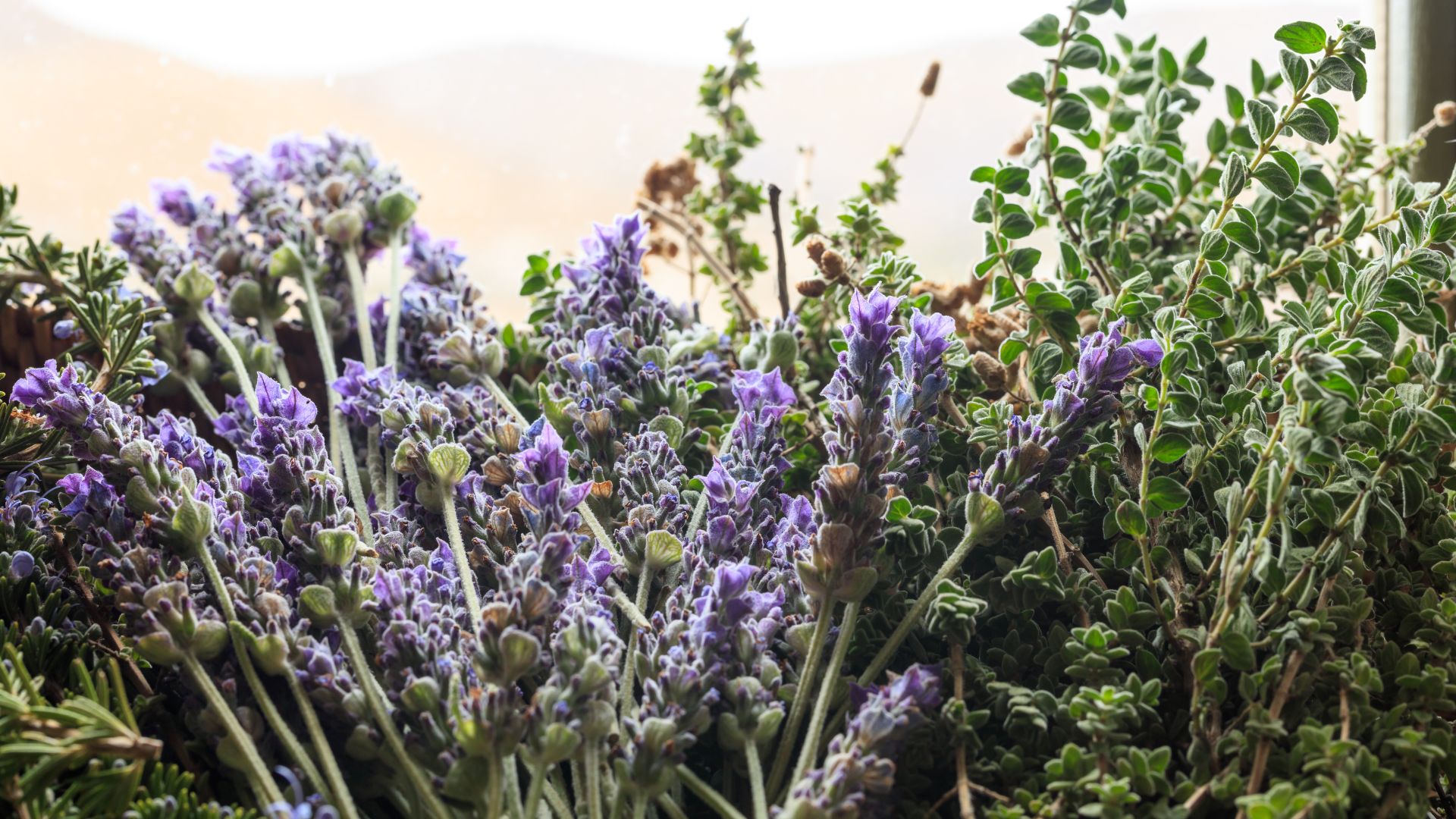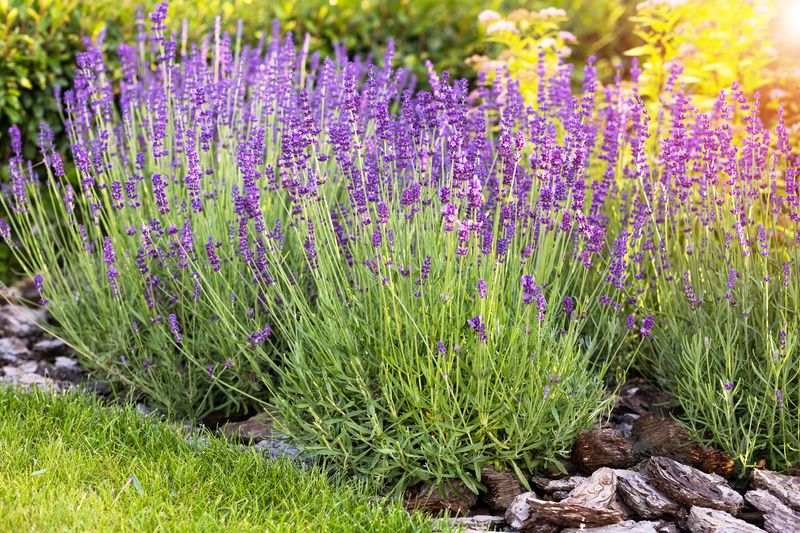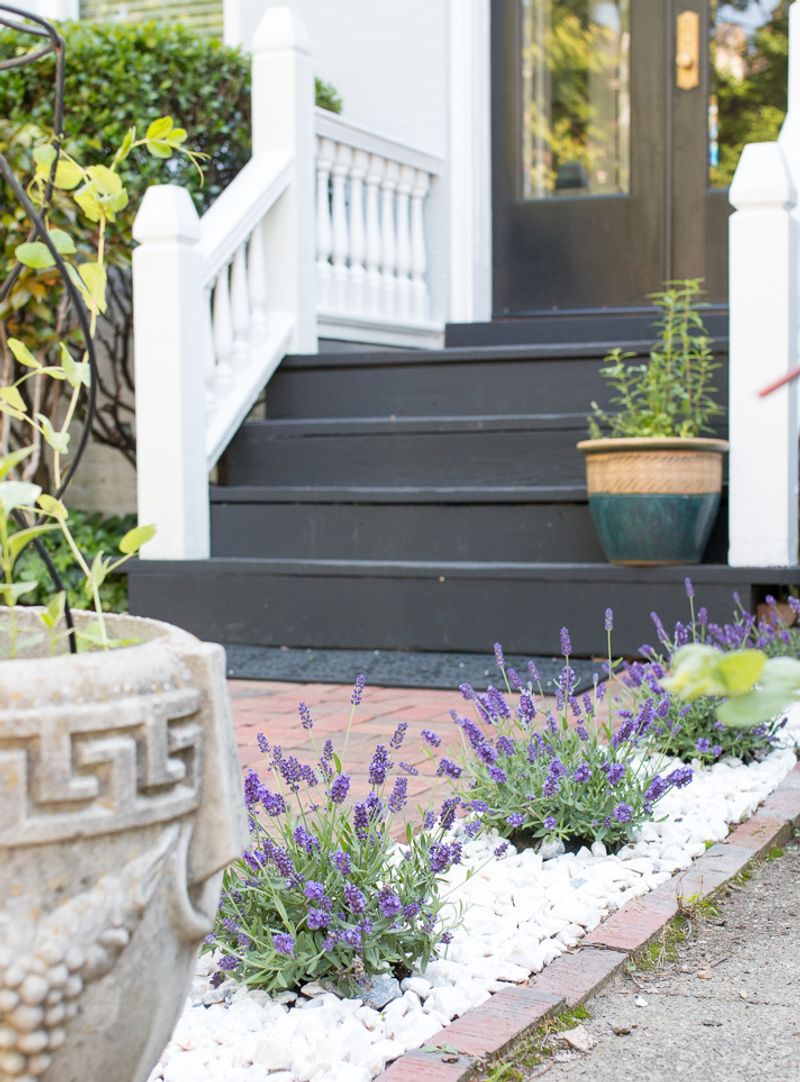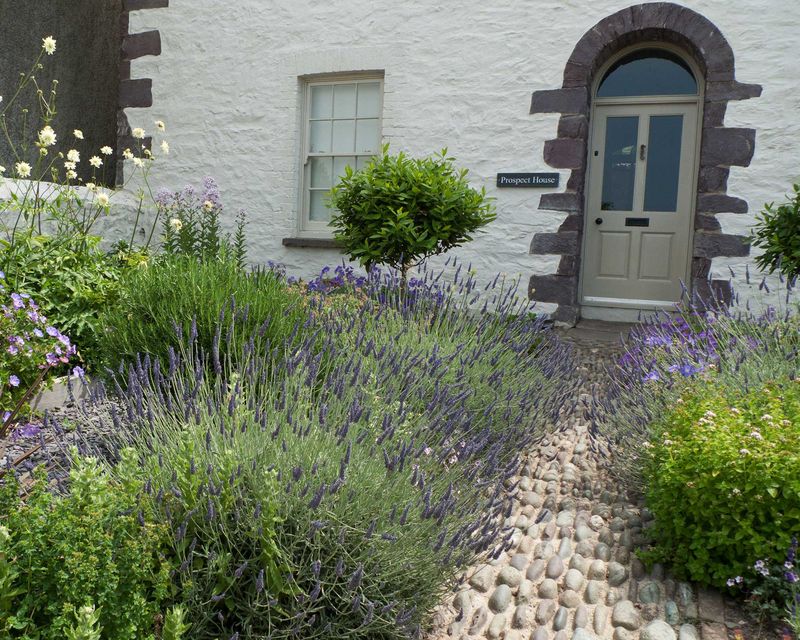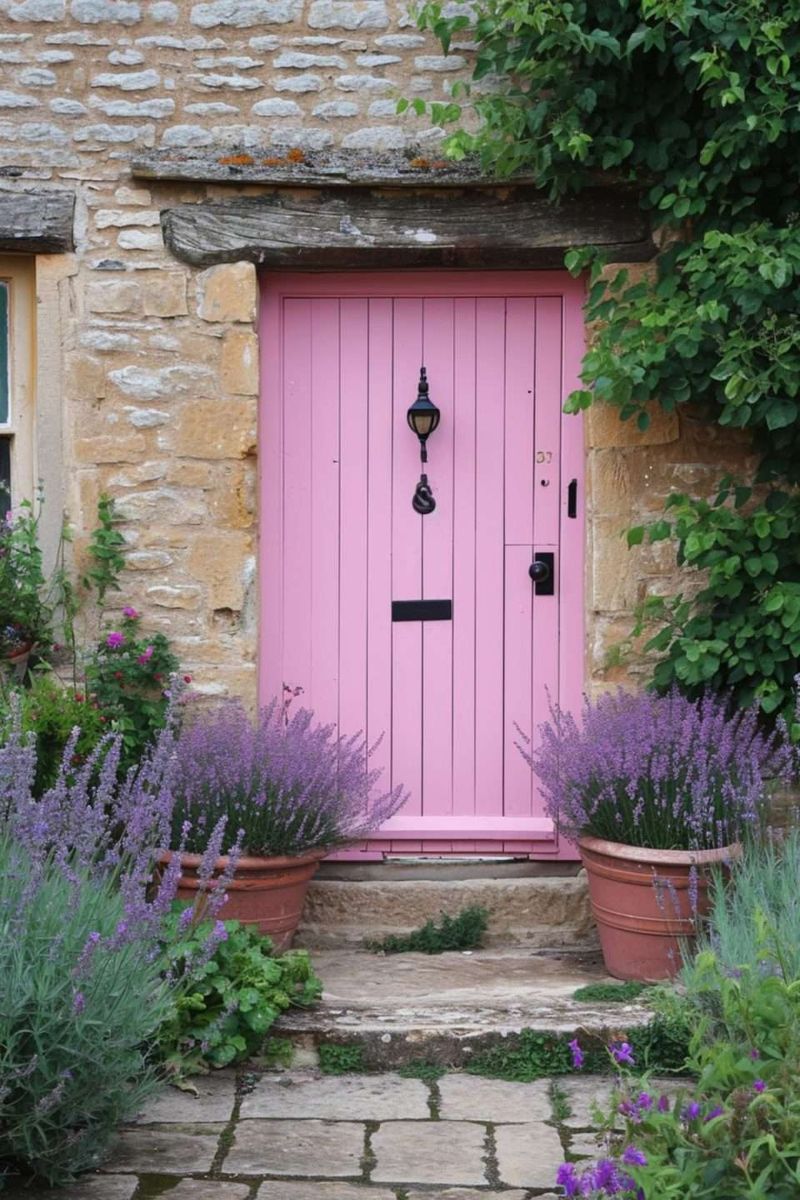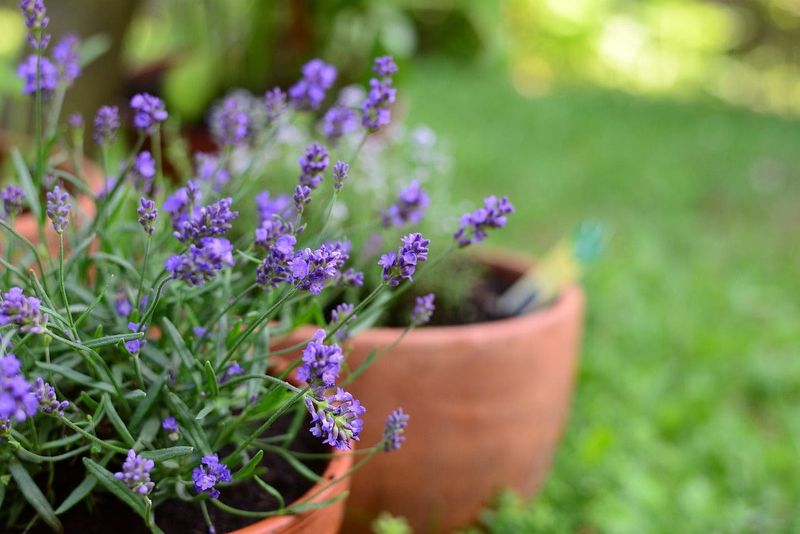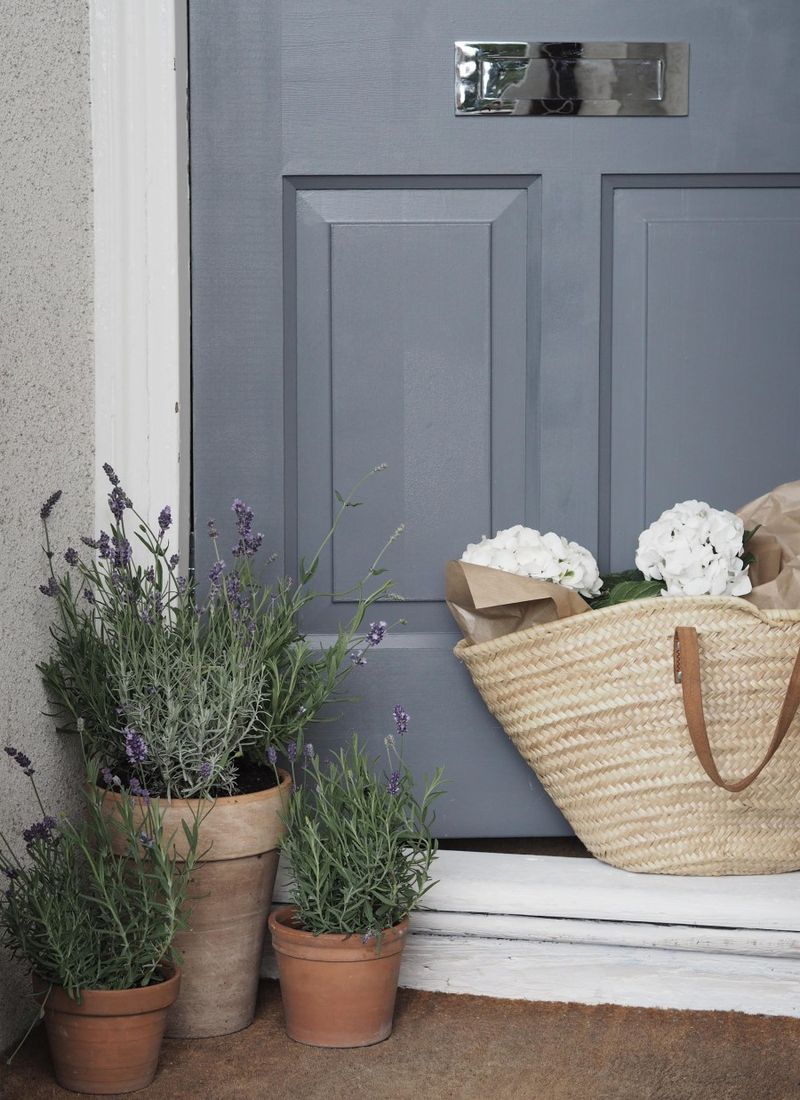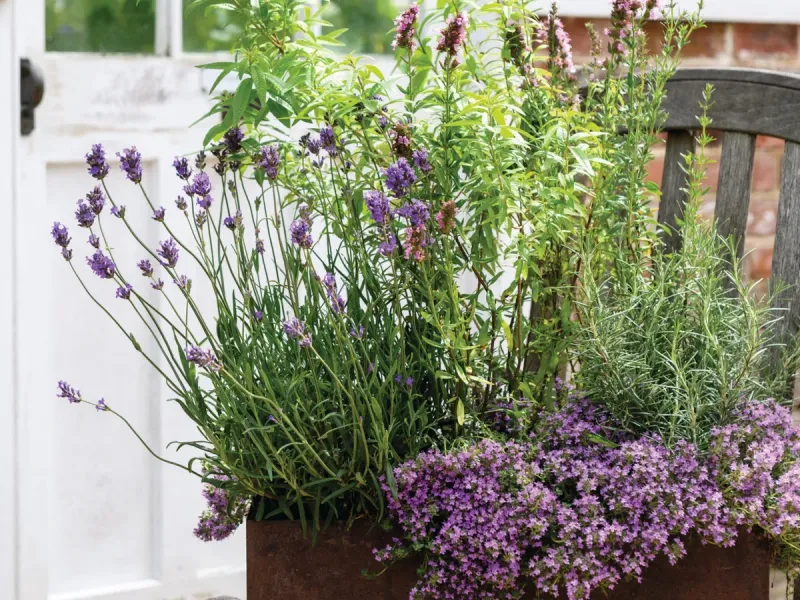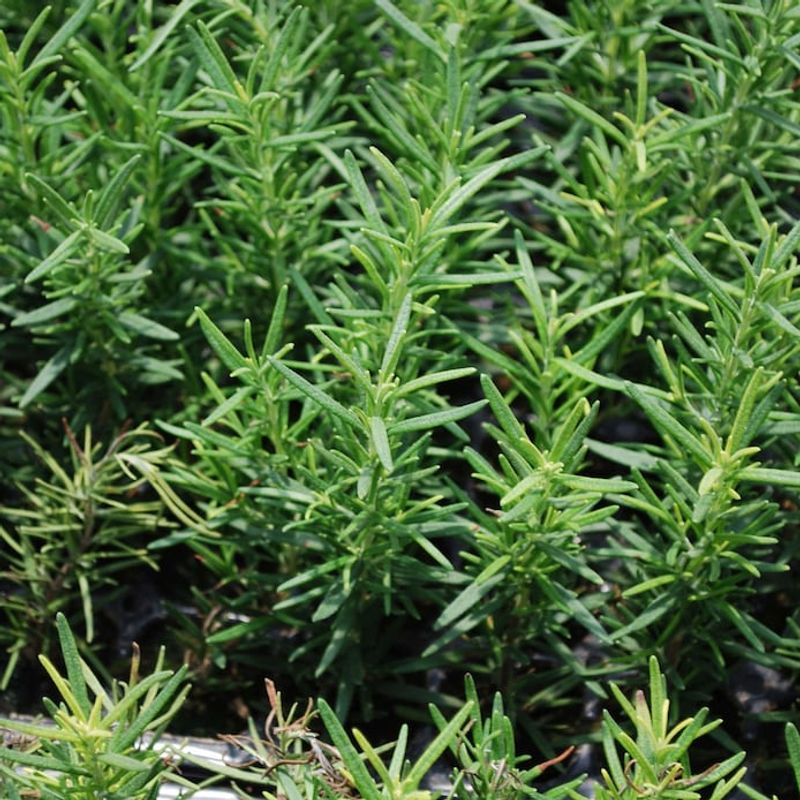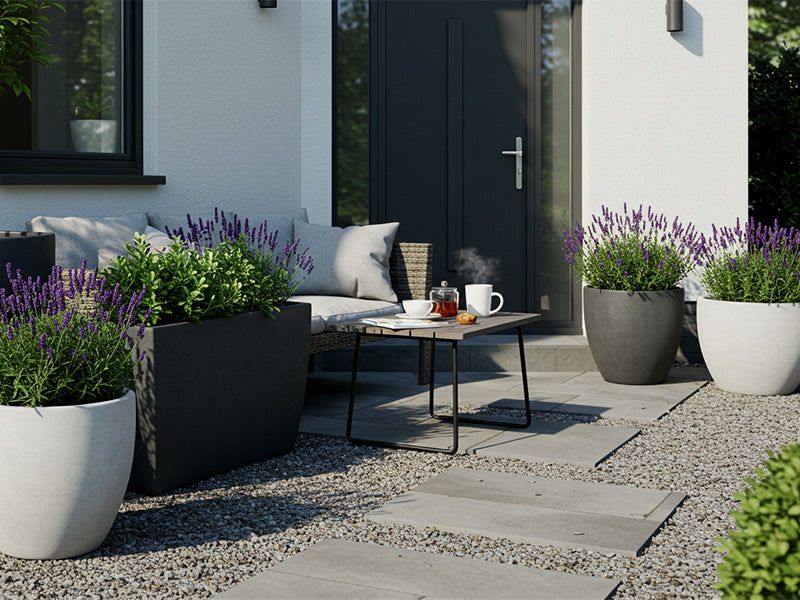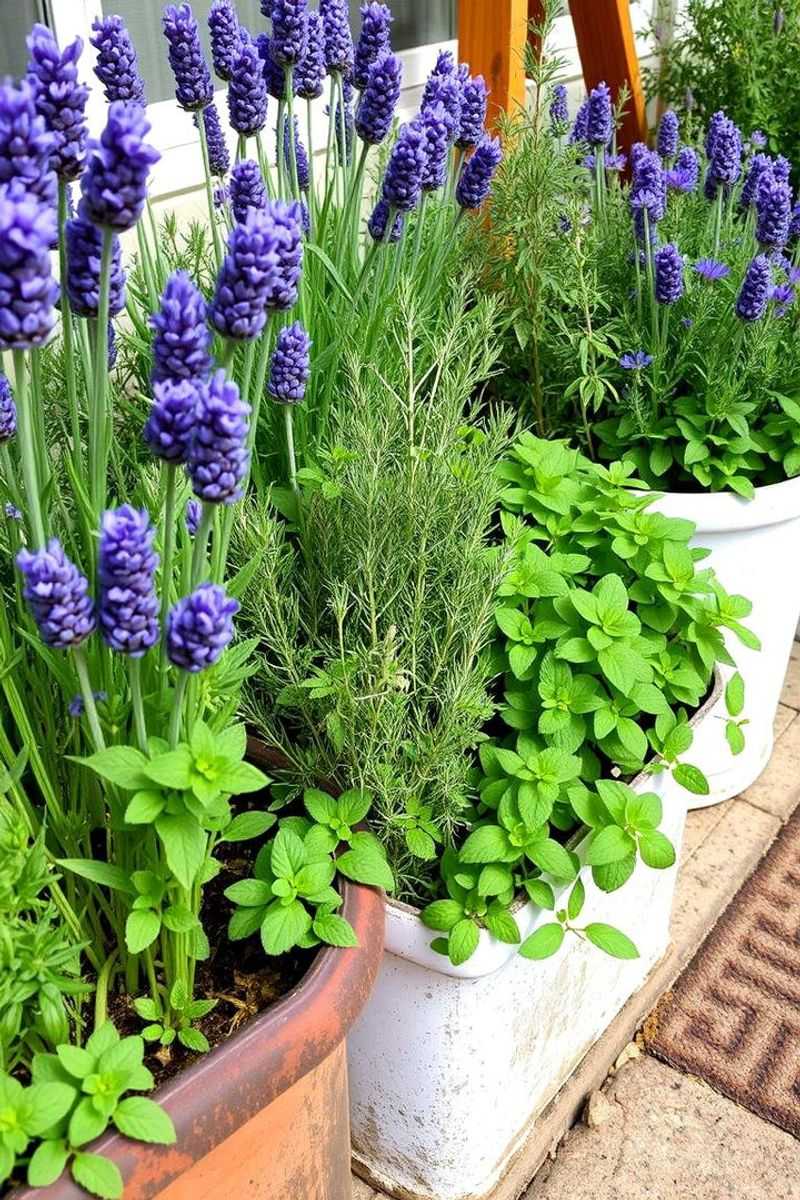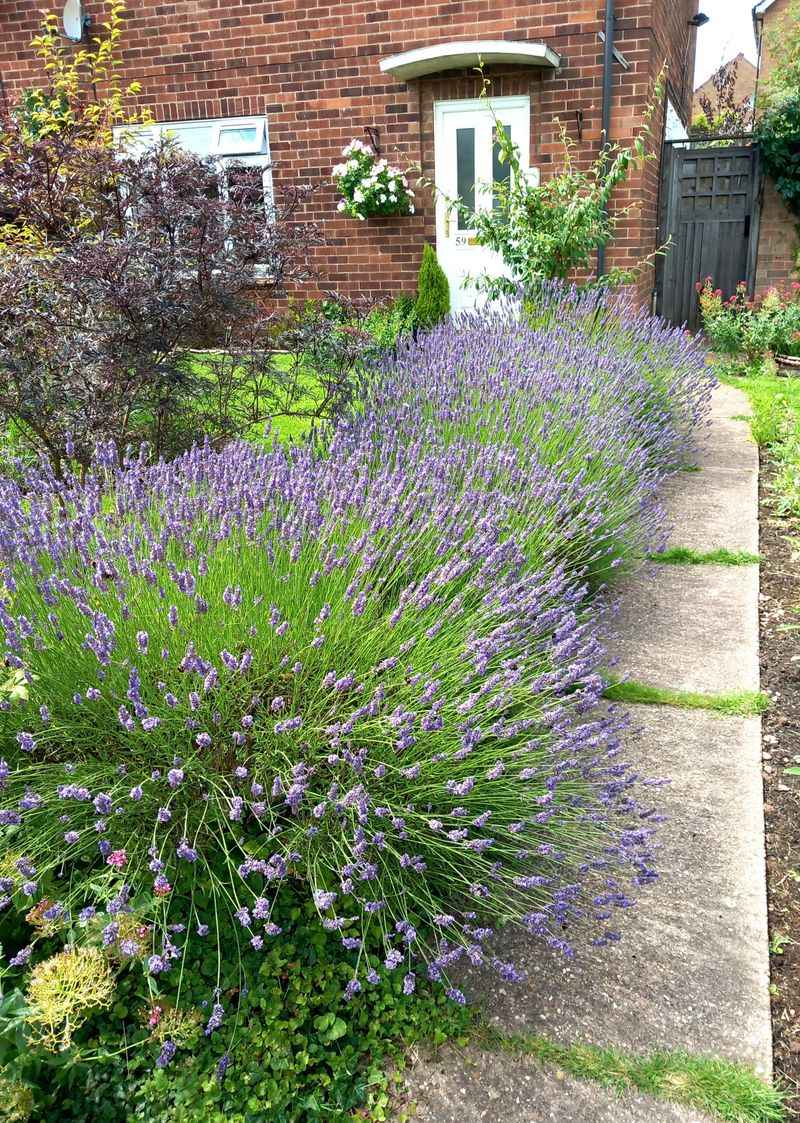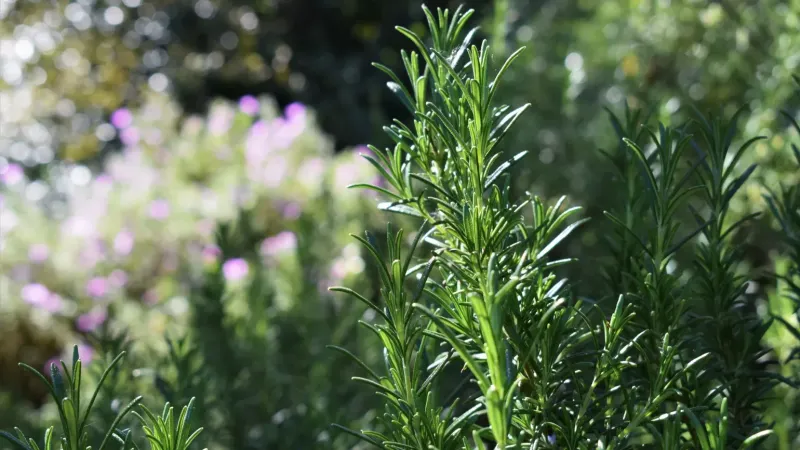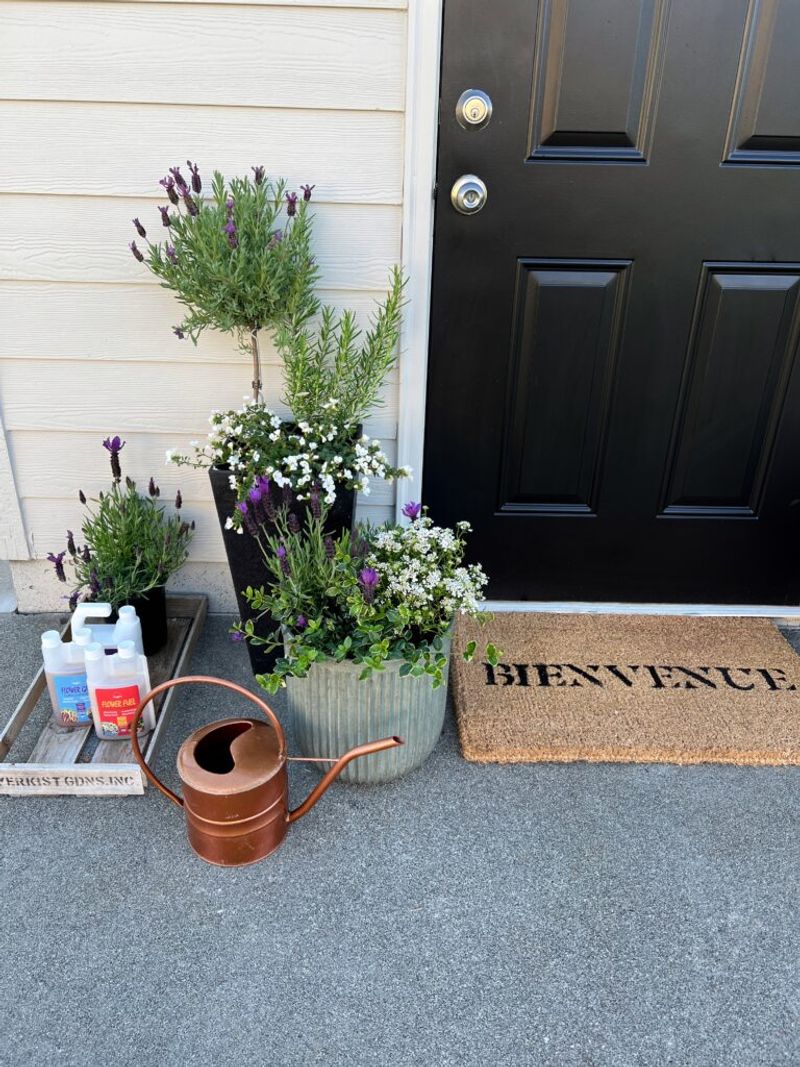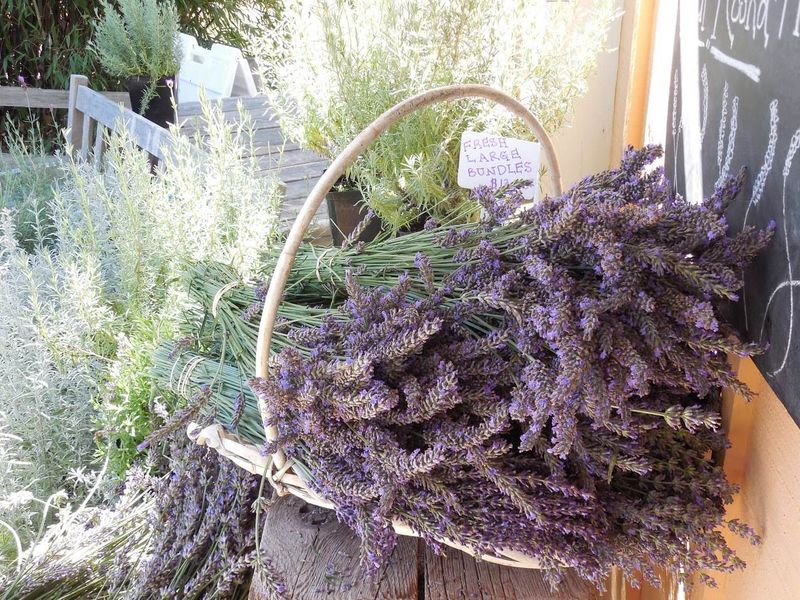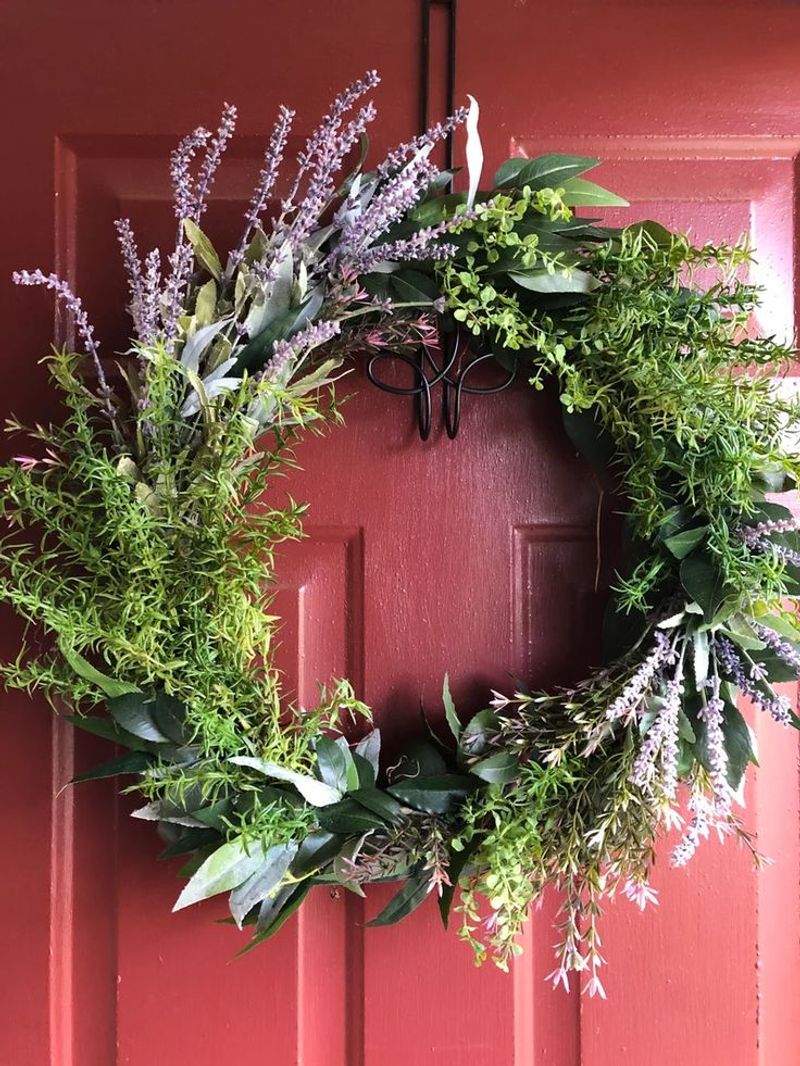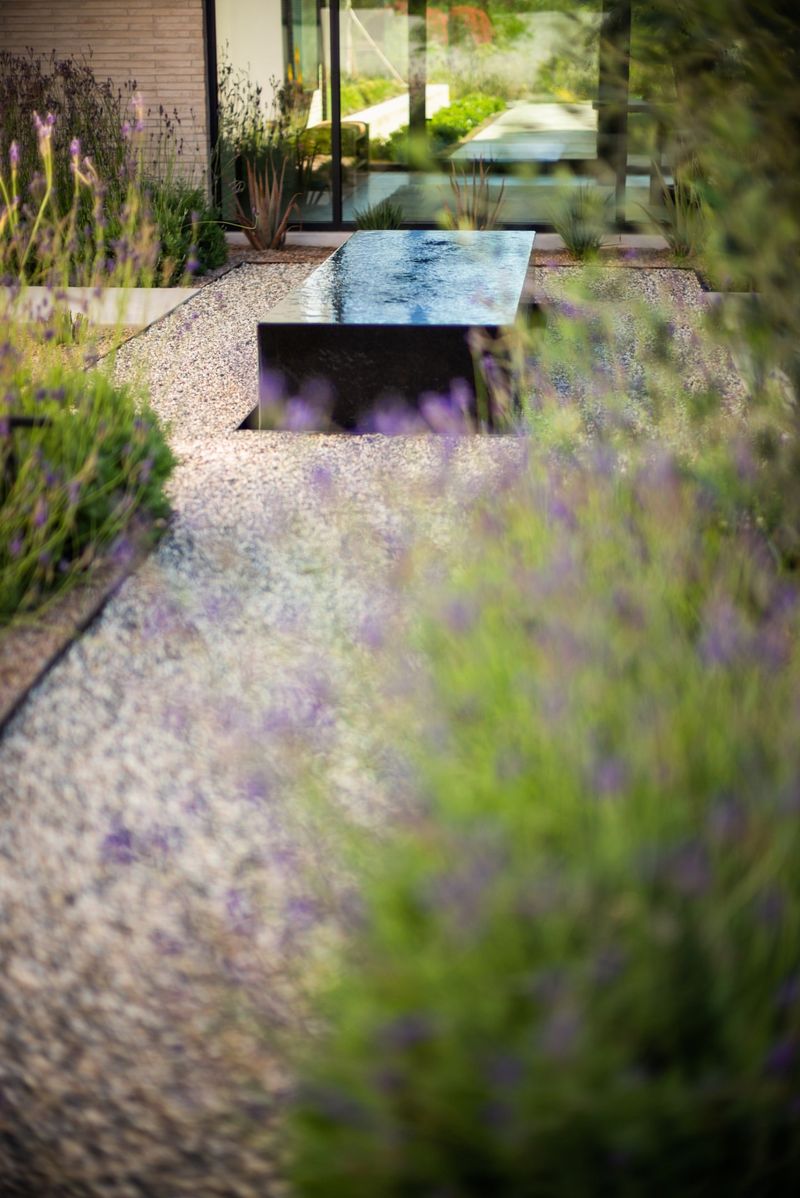Planting herbs by your front door creates more than curb appeal—it sets the tone every time you come home. Lavender and rosemary are stars in this space, greeting visitors with calming scents and soft textures that feel inviting and intentional.
These Mediterranean natives love sunny spots and well-drained soil, making them perfect neighbors. They complement each other beautifully, with lavender’s soothing aroma and rosemary’s energizing fragrance creating a balanced sensory experience.
But their magic goes beyond smell—rosemary can help deter pests, while lavender attracts pollinators and adds visual softness. Together, they offer beauty, function, and a quiet sense of welcome with every breeze.
1. Natural Insect Repellent
The strong aromatic oils in these plants naturally deter many common pests. Mosquitoes, flies, and even some ants tend to avoid the potent scent that humans find so pleasant.
For my family, this natural barrier has meant fewer unwanted bugs entering our home when doors open. The best part? No need for chemical sprays that might harm beneficial insects.
Simply brushing against the plants when entering releases more oils, creating an invisible shield exactly when you need it most.
2. Welcoming Fragrance
Walking through a fragrant entryway instantly lifts your mood after a long day. The calming scent of these herbs creates a sensory transition between the outside world and your home sanctuary.
My neighbor actually installed a small bench beside her herbs, creating a peaceful spot to decompress before heading inside. Guests frequently comment on how inviting her entrance feels compared to others on the block.
During summer evenings, the gentle breeze carries the aroma throughout the front yard, extending your living space outdoors.
3. Drought-Resistant Landscaping
Water conservation becomes easier with these Mediterranean natives that thrive in dry conditions. Once established, both plants require minimal irrigation compared to typical landscape choices.
During last summer’s water restrictions, the front gardens on our street struggled while these hardy herbs continued looking fresh. Their silver-green foliage naturally complements many architectural styles without demanding precious resources.
The root systems help prevent soil erosion around your foundation, an added benefit during heavy rain events that might otherwise damage your property.
4. Year-Round Visual Interest
Even in winter, these evergreen perennials maintain their structure and color when other plants go dormant. The silver-green foliage creates a sophisticated backdrop that complements any home’s exterior.
In my case, the purple lavender blooms and occasional blue rosemary flowers provide seasonal color changes without replanting. Visitors often ask about my “landscaping secret” when they notice how good the entrance looks throughout the year.
The compact growth habit means they won’t outgrow their welcome or block pathways, maintaining their attractive appearance with minimal pruning.
5. Stress Relief On Arrival
Studies show that simply inhaling these herbal scents can lower cortisol levels and reduce anxiety. Coming home to this natural aromatherapy creates an immediate transition from work stress to relaxation.
The ritual of brushing fingers against the plants before entering has become a mindfulness practice for many gardeners. Just a brief moment of connection with these plants signals to your brain that it’s time to unwind.
Guests often comment on feeling instantly more at ease when arriving at homes with these aromatic sentinels guarding the entrance.
6. Pollinator Paradise
Bees and butterflies flock to these flowering herbs, bringing life and movement to your entryway. The steady supply of nectar supports local pollinator populations that help your entire garden thrive.
Watching these beneficial insects at work creates fascinating moments of connection with nature right at your doorstep. Children especially delight in observing the busy visitors without venturing far from home.
The gentle hum of bees visiting the blooms adds another sensory dimension to your entrance without attracting stinging insects to your door itself.
7. Culinary Convenience
Fresh herbs within arm’s reach make everyday cooking more inspired. Grabbing a sprig of rosemary for roasted potatoes or lavender for tea becomes effortless when they’re part of your entry landscaping.
The convenient location means you’ll actually use these herbs rather than forgetting about plants tucked away in a back garden. Many home cooks report experimenting more with fresh herbs after placing them somewhere they pass daily.
Unexpected dinner guests? A quick snip provides both a flavor boost and attractive garnish for last-minute entertaining.
8. Natural Air Freshener
Opening your front door circulates the clean, herbal scent throughout your home’s entryway. Unlike artificial air fresheners, these plants purify the air while adding pleasant fragrance.
The subtle aroma clings lightly to clothing and hair as you brush past, creating a signature scent that becomes associated with your home. Friends have mentioned they can always tell when they’ve been to my house by the lingering herbal notes.
During summer months, placing a small fan near the door can help draw more of the fragrance indoors, naturally refreshing stuffy rooms.
9. Increased Property Value
Real estate agents confirm that thoughtful landscaping with low-maintenance perennials boosts curb appeal and first impressions. The structured appearance of these herbs suggests a well-cared-for property to potential buyers.
The investment is minimal compared to the visual impact and practical benefits they provide. Several neighbors in our development have adopted similar plantings after seeing how they enhanced property appearance.
Unlike trendy plants that quickly look dated, these classic Mediterranean herbs have timeless appeal that complements various architectural styles from colonial to contemporary.
10. Historical Connection
Growing these ancient herbs continues a tradition dating back thousands of years. Medieval cottages and Roman villas alike featured these plants near entryways for many of the same reasons we value them today.
The practice connects your home to a rich cultural heritage spanning continents and centuries. When I planted mine, an elderly neighbor shared stories of her grandmother’s European garden that featured the same plants.
Some historical traditions suggest these plants brought protection and good fortune to a dwelling, adding a touch of folklore to your landscaping choices.
11. Low Maintenance Beauty
Busy homeowners appreciate plants that look great without constant attention. Once established, these herbs require minimal care beyond occasional pruning and very little water.
The natural growth habit stays relatively compact without becoming leggy or sprawling. Even gardening novices find success with these forgiving plants that thrive on benign neglect.
Unlike fussy annuals that need replacing each season, these perennials return year after year, actually improving with age as they develop woody stems and more concentrated essential oils.
12. Medicinal Herb Garden
Traditional healing practices have utilized these herbs for centuries to treat various ailments. Having them readily available means you can harvest fresh sprigs for teas, tinctures, or poultices.
The antimicrobial properties make them useful for minor first aid situations like small scrapes or burns. A friend taught me to make a simple lavender salve that’s become our family’s go-to for minor skin irritations.
Growing your own ensures you have organic, unsprayed herbs for medicinal uses without concern about chemical residues found on store-bought alternatives.
13. Fire-Resistant Landscaping
In drought-prone areas, creating defensible space with fire-resistant plants is increasingly important. The high moisture content in these herbs’ leaves makes them less likely to ignite compared to many ornamentals.
Their compact growth habit doesn’t create the dangerous “ladder fuels” that allow flames to reach your home. During last year’s wildfire season, our local fire department actually recommended these plants as safer alternatives to common foundation plantings.
The gravel mulch typically used around Mediterranean herbs creates additional protection by eliminating flammable ground cover near the structure.
14. Gift-Ready Garden
Having an abundance of these versatile herbs means always having meaningful gifts on hand. Small bundles of dried lavender or rosemary sprigs make thoughtful hostess presents or last-minute tokens of appreciation.
The plants themselves can be easily propagated from cuttings to share with friends and family. I’ve started dozens of new plants from my established specimens, creating a connection between gardens across town.
Homemade products like herb-infused vinegars, oils, or sachets become signature gifts that recipients look forward to receiving from your garden’s bounty.
15. Seasonal Craft Materials
Creative projects become easier with a steady supply of beautiful natural materials just steps from your door. Wreaths, potpourri, and botanical prints all benefit from freshly harvested stems.
Holiday decorating takes on a personal touch when incorporating elements from your own garden. The winter holidays especially benefit from the evergreen nature of rosemary and the structural quality of dried lavender.
Children’s craft projects gain sensory dimensions when incorporating these aromatic plants, creating memories associated with both the creative process and the distinctive scents.
16. Conversation Starter
Unique plantings inevitably draw comments and questions from visitors and passersby. These interactions often lead to meaningful connections with neighbors who share gardening interests.
The practical benefits become natural talking points that go beyond typical small talk. One brief discussion about my front door herbs led to a neighborhood garden tour that’s now an annual tradition.
Sharing knowledge about these plants helps spread sustainable gardening practices throughout the community, creating a ripple effect from your simple planting choice.

